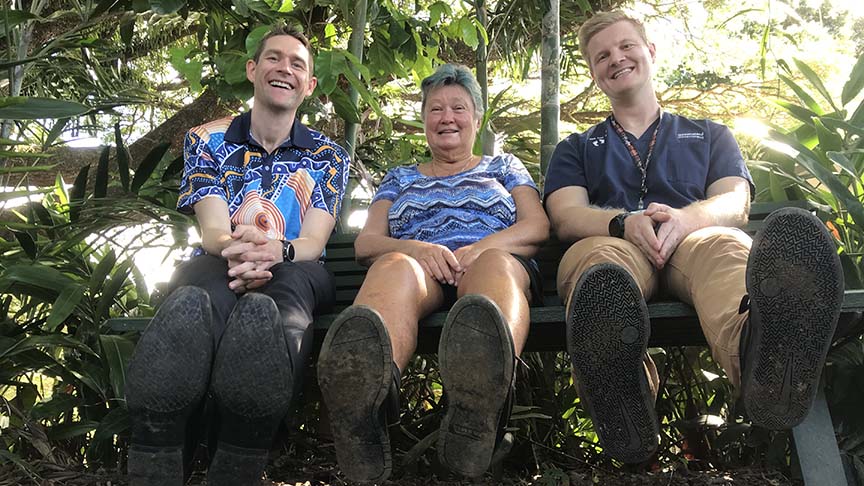
A specialist service for people with diabetes has helped decrease limb amputations across the Far North by nearly 20 per cent in the past five years.
The High Risk Foot Clinic at the Cairns Diabetes Centre, which was established in 1996, has made large strides in preventing foot ulceration and lower limb amputations in the region.
Foot ulceration and lower limb amputations are a leading cause of hospitalisation for people with diabetes in Australia.
Up to 34 per cent of people with diabetes are expected to develop a diabetes-related foot ulcer within their lifetime.
Without good care, approximately 50 per cent of these people will require an amputation, and about 20 per cent will require hospitalisation.
First Nations people experience diabetes-related foot complication rates three to six-fold higher than non-indigenous people, and lower limb amputation rates 38 times that of non-Indigenous people.
Cairns Diabetes Centre Director of Podiatry, Danielle Charles, said the High Risk Foot Clinic had successfully implemented a sustainable, culturally safe and responsive high risk foot service to the Far North’s rural hospitals and Aboriginal and Islander Community Controlled Health Services.
‘Five years after the High Risk Foot Service was established, we have been able to increase patient access to a specialist multi-disciplinary team comprised of podiatrists, diabetes nurse educators, indigenous health workers, endocrinologists, dietitians and psychologists,’ she said.
‘Expanding podiatry to rural and primary health care service has meant far less travel for our patients, allowing them to receive treatment closer to home.
‘In the long-term this has helped our patients manage their chronic conditions, and increase their overall health outcomes, including feet issues.’
She said between 2017-2021, the High Risk Foot Service had decreased amputation rates within the Cairns and Hinterland catchment by 19 per cent.
‘Foot disease is in the top 10 causes of hospitalisation in Australia, and can cost taxpayers an estimated $10,000 per patient,’ she said.
‘Keeping patients out of our hospitals is not only in the best interest of our patients, but also helps us divert resources into other health programs.’
Cairns resident Deborah Bennett, 65, was first diagnosed with Type 1 diabetes at the age of 7, and spent much of her young life in and out of hospital.
Working as a teacher for a family on Green Island in 1998, she noticed an ulcer on her foot that did not heal.
She was later diagnosed with Charcot foot - a rare complication of diabetes, that attacks the bones, joints, and soft tissue in your feet.
‘Over 10 years I have been a patient of the High Risk Foot Clinic, who have helped me with plasters, bandages, moon boots and other ways to look after my condition,’ she said.
‘The Cairns Diabetes Centre has great staff who are very knowledgeable and took great care of my feet.’
She encouraged anyone suffering issues with their feet as a result of a diabetic condition to go and see a doctor.
‘Go straight to your GP and get a referral,’ she said.